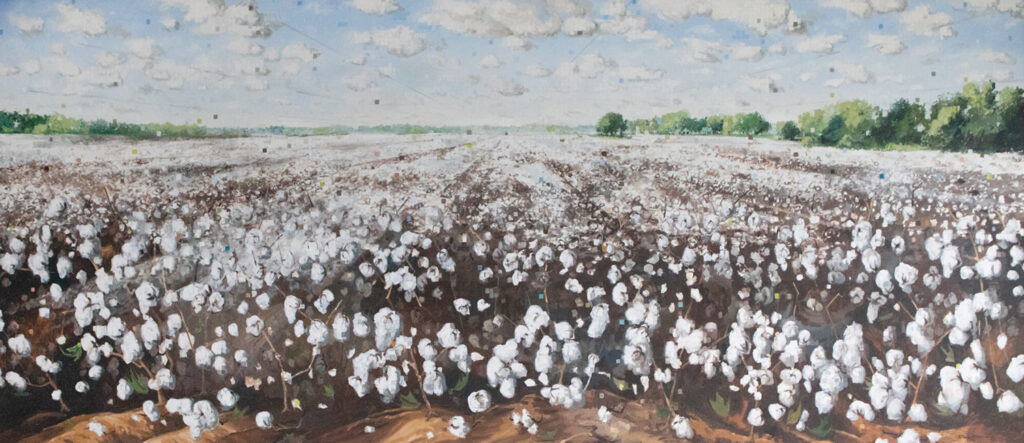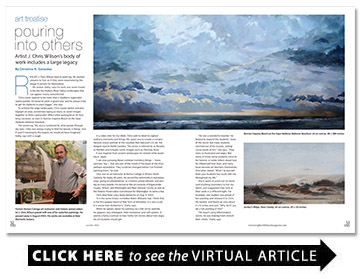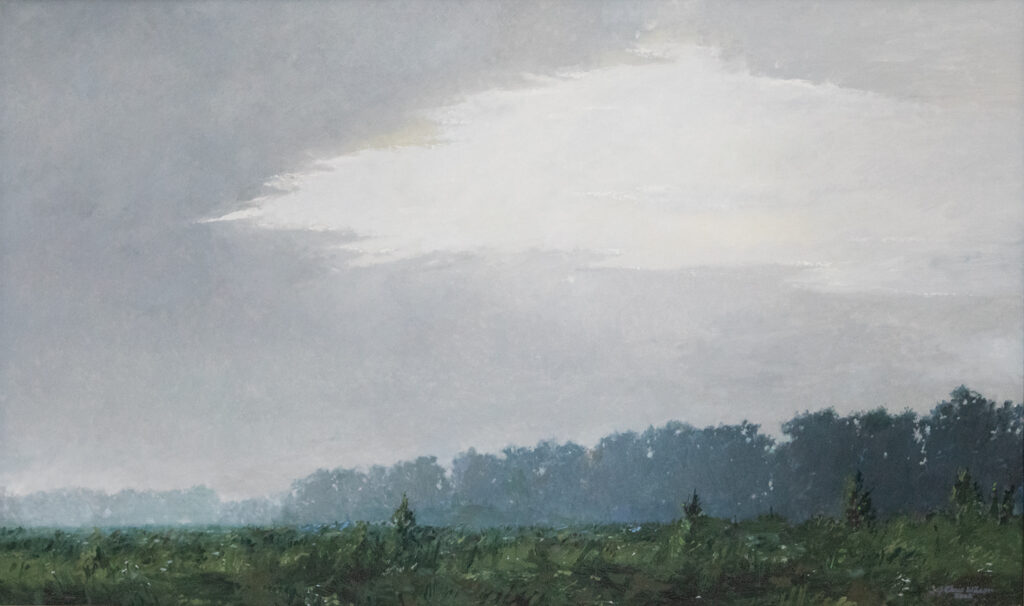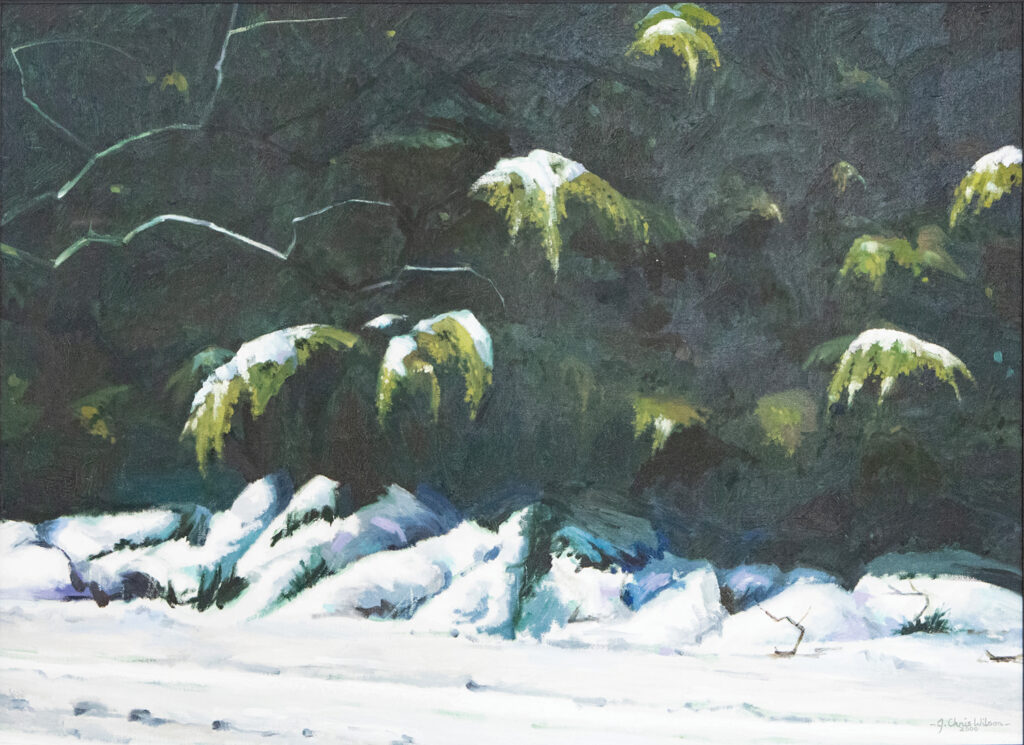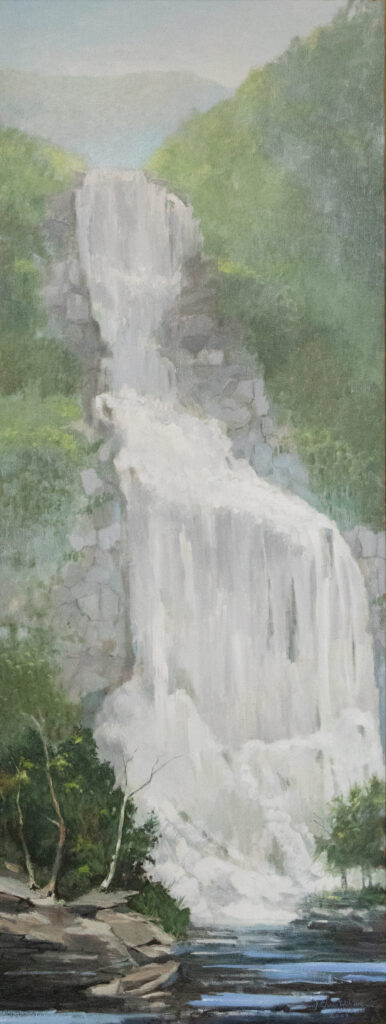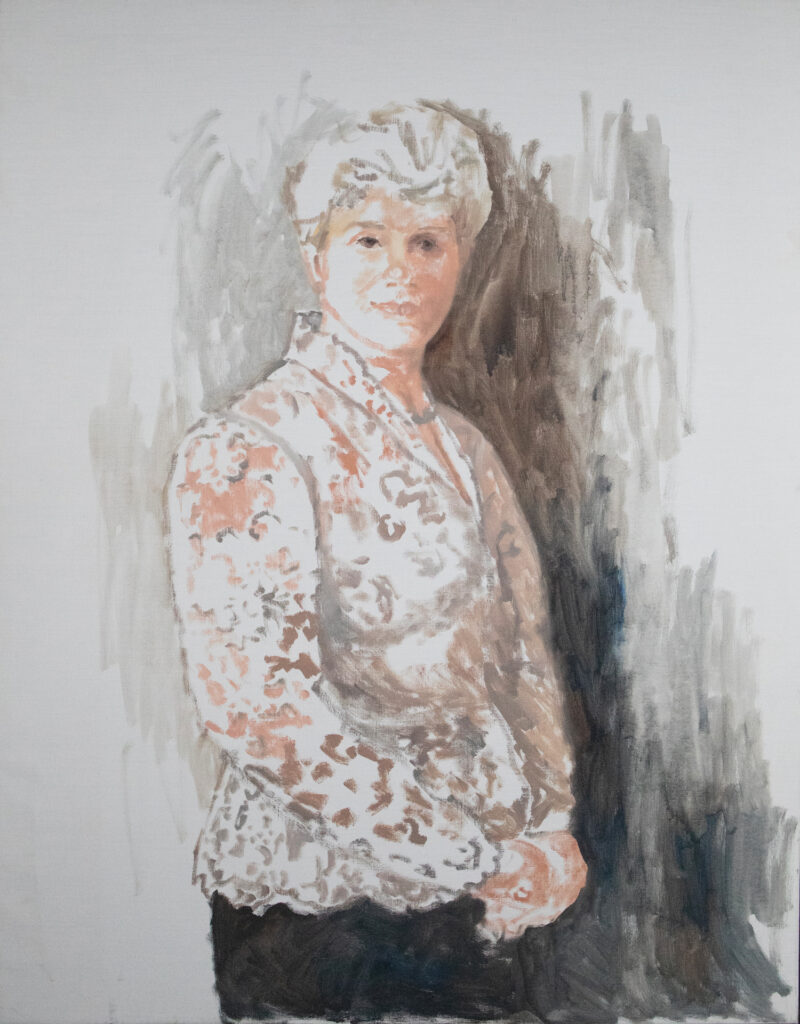Pouring Into Others
Artist J. Chris Wilson’s body of work includes a large legacy
BY Christine R. Gonzalez
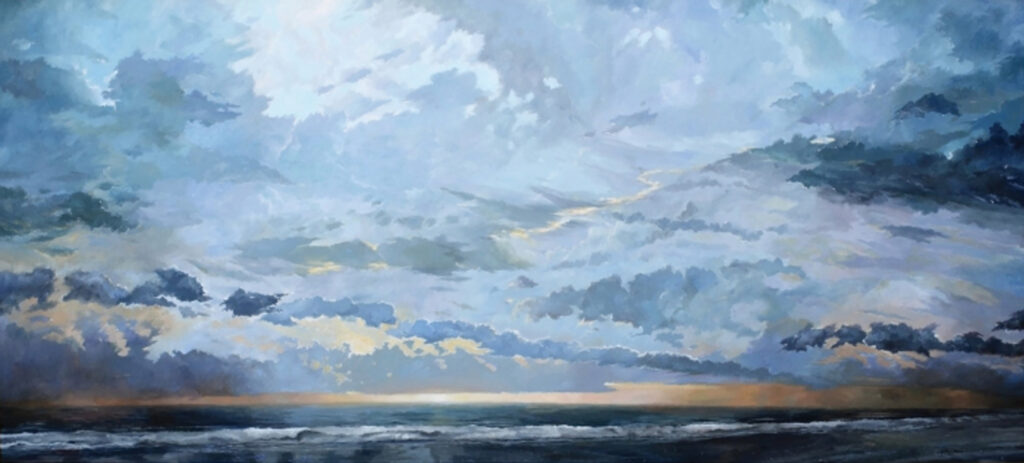
Realist J. Chris Wilson liked to paint big. He wanted viewers to feel as if they were experiencing the image in person for themselves.
His widow, Kathy, says his work was never meant to be like the Hudson River Valley landscapes that can appear overly romanticized.
“Chris never aspired to be more than a Southern regionalist, realist painter. He loved to paint in grand size, and he always tried to get his students to paint bigger,” she says.
To achieve the large landscapes, Chris would sketch and photograph an area, sometimes taping as many as seven images together to form a panoramic effect often portrayed on 16-foot-long canvases, as seen in Sunrise Coquina Beach on the Cape Hatteras National Seashore.
“He would say, ‘My soul is sustained by what passes through my eyes.’ Chris was always trying to find the beauty in things. And it wasn’t necessarily the beauty we would all have imagined,” Kathy says with a laugh.
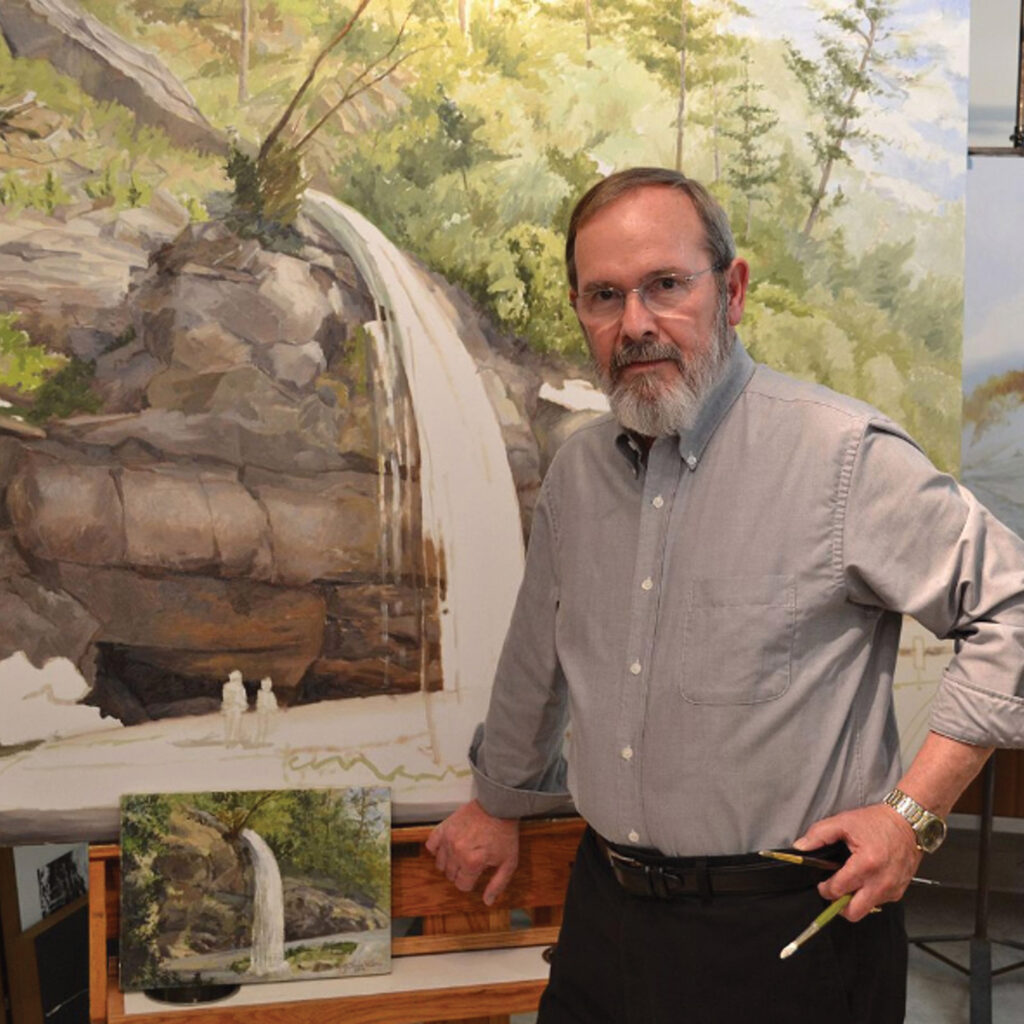
In a video shot for Our State, Chris said he liked to capture ordinary moments and things. His quest was to create a comprehensive scenic portrait of the counties that intersect U.S. 64, the longest road in North Carolina. The series is referred to as Murphy to Manteo and includes iconic images such as Chimney Rock.
It was inspired from ancient landscapes he viewed while teaching in Japan.
“I am also pursuing those common transitory things — trees, sunrises, fog — that are part of the mood of the place at the time, perhaps ephemeral. They could be changed before I’ve finished painting them,” he said.
Chris was an art instructor at Barton College in Wilson, North Carolina, for nearly 40 years. He served the community in numerous ways, giving art presentations, as a historic preservationist, and serving on many boards. He served on the art councils of Edgecombe County, Wilson, and Wilmington and New Hanover County as well as the Historic Preservation Commission for Wilmington, to name a few.
Chris died from Lewy body dementia on Aug. 5, 2023.
“It is the same illness comedian Robin Williams had. I think that is the first people heard of that form of dementia. It is very cruel; it is worse than Alzheimer’s,” Kathy says.
When he speaks about his painting via a link on his website, he appears very intelligent, mild-mannered, and soft-spoken. It seems a funny contrast to hear Kathy tell stories about how angry his art students would get.
“He was a wonderful teacher. He helped to expand the students’ vision of the world, but many students stormed out of his classes, yelling curse words at him,” she says. “They were so frustrated and angry. But many of those same students came to his funeral, or wrote letters about how he influenced their lives, and many have become art teachers themselves. One letter stated, ‘What I’ve learned from your husband has stuck with me throughout my life.’”
She is quick to point out he never said anything incendiary to the students, just suggested they look at their work in a different light. For example, one student was proud of her painting and showed it to Chris. He looked, and found an area about 4 x 4 inches and said, “Why don’t you do a full painting of this?”
“He wasn’t using Inflammatory words, he was making them stretch their minds,” Kathy says.
His students and their work were as important as his own art.
Former students came forward at his funeral to share numerous ways he stayed after them. One was impressed that after emotionally yelling she was never coming back to class, Chris found her schedule and waited for her outside another class to encourage her to continue to hone her skills.
She returned and went on to earn a master’s degree. She teaches in the same department at Barton College that Chris was in, and the Wilsons became godparents to one of her children.
“His paintings I think are exquisite, a unique look at the world. But it’s also the man, and what he contributed,” Kathy says. “Boy did he turn a lot of people into painters who never thought they were going to be painters. A lot of them were just taking that general education art requirement.”
The legacy Chris leaves behind includes his many snapshots of North Carolina beauty, as seen in The Breaker at Emerald Isle, Dunes of Cape Hatteras, Jockey’s Ridge Dare County, and Creek to Sound on Mashoes Road Dare County.
His paintings run the spectrum of landscape, architecture, portrait, and still life. His earlier work was abstract. All can be viewed on the website jchriswilson.com.
The landscapes include rural scenes of haybales, cotton plants, waterfalls, ponds, trees and fields. Local vistas such as Bellamy Mansion from Kenan Plaza, Wilmington, NC can be seen along with vivid portraits.
Chris enjoyed setting up his easel in quaint Tarboro Common, near where he lived in Edgecombe County for many decades. He said the common had a native indigenous look and he felt at home there. It is said to be the second oldest town common in the nation, behind Boston Common.
Chris was originally from Waycross and St. Simons Island, Georgia. His landscapes include road-covering trees in Avenue of the Titans, St. Simons Island, GA which resemble The Hedges, a tourist destination in Ireland thanks to scenes from Game of Thrones.
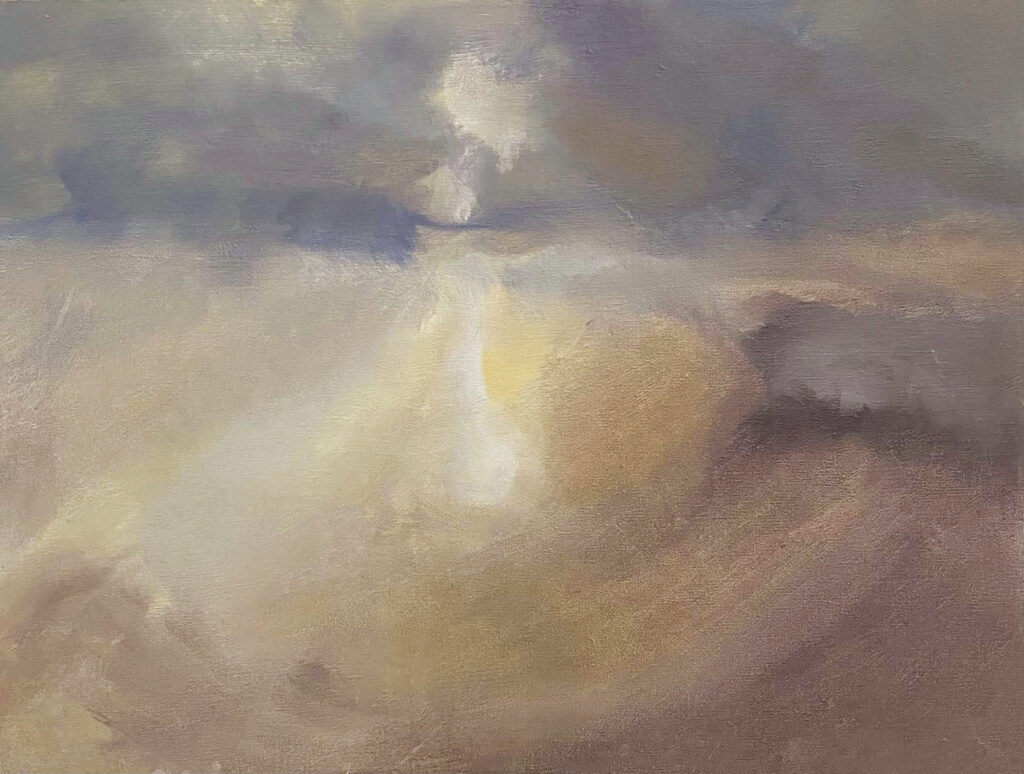

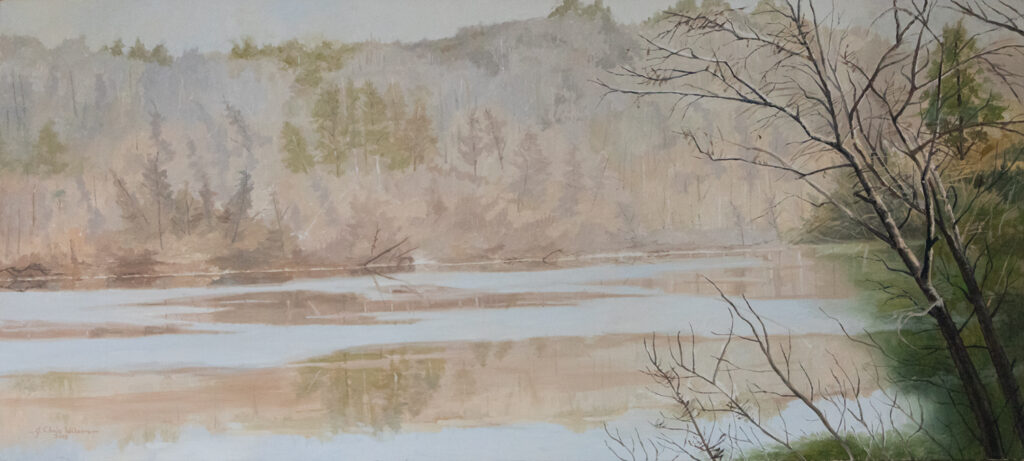
Other works include the hard-to-capture essence of water, whether falling as in Study Whitewater Falls, or barely rippling like satin ribbons in the colorful Goldfish Pool with My Shadow.
Chris’s work is held in private collections all over the world and is on display in many places, including the NC Museum of History and the House of Representatives Chambers in the North Carolina Legislative Building. His work is for sale through New Elements Gallery in Wilmington.

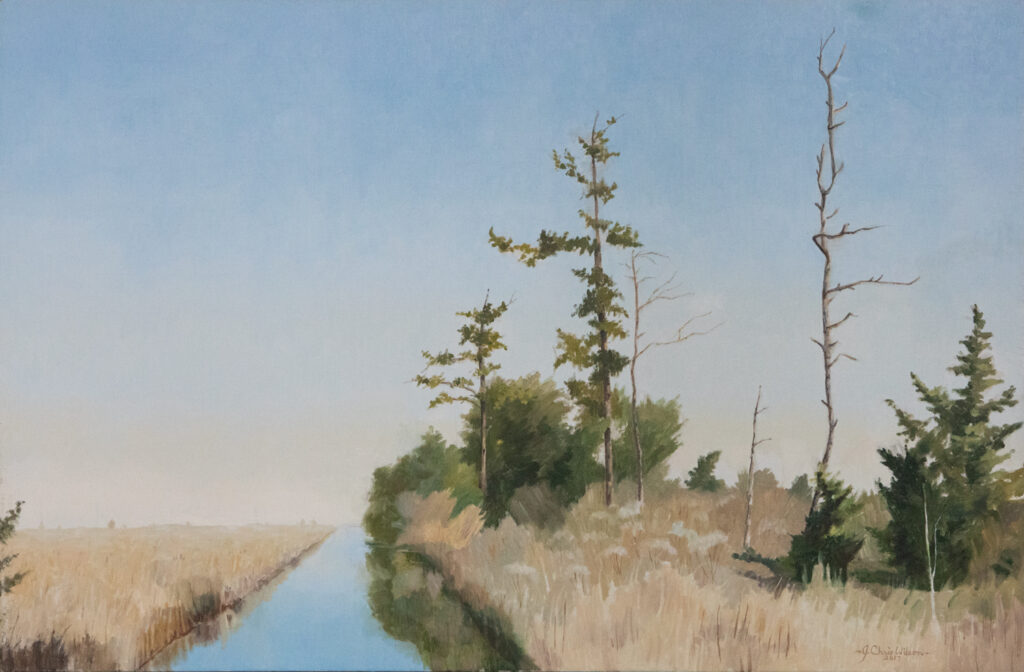
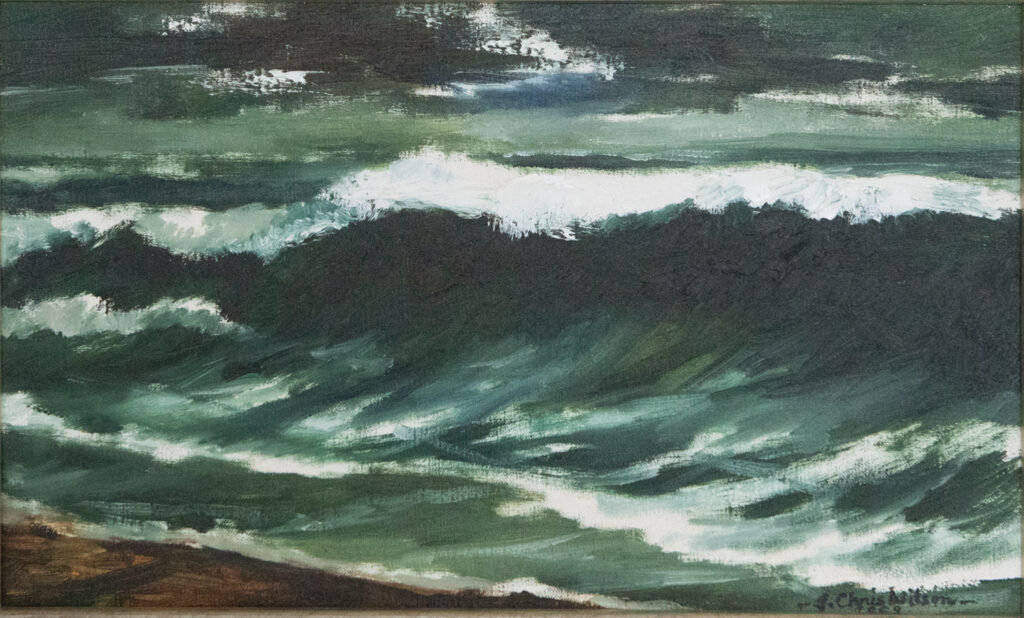
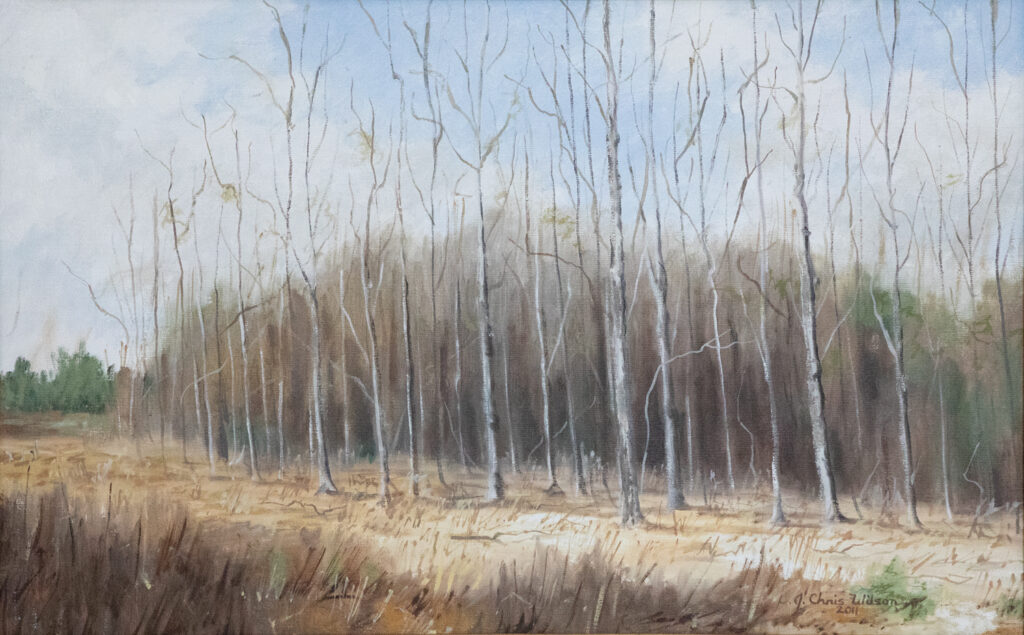
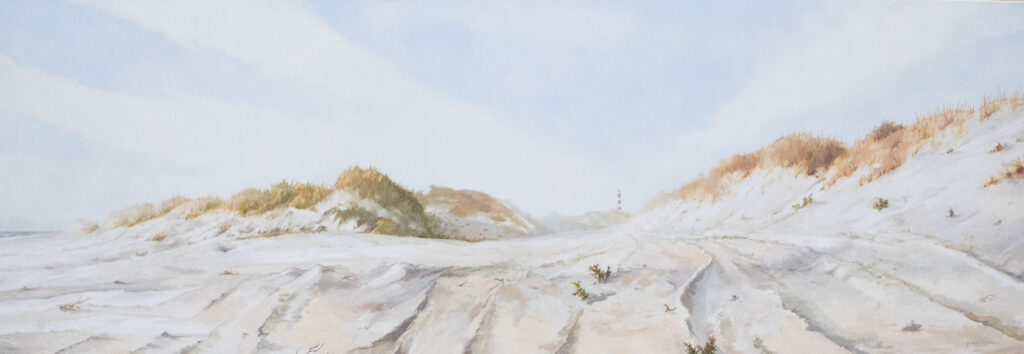
Chris and Kathy spent years restoring a beautiful home in Wilmington that had been built for a German merchant named Jacob Wessel. It’s known as Tuscany and is located on South 5th Avenue. Kathy sold the home and New Elements curator Miriam Oehrlein helped her pack up Chris’s home studio on Mother’s Day this year.
“Miriam had set aside a portrait and when I walked in the studio, she asked me if I knew who it was,” Kathy says. “It was me.”
She had no idea her husband had painted her more than 20 years ago.
“It’s unfinished, what he would have called a sketch. I just stood there and bawled, because I thought I’d missed out on having a portrait by Chris,” she says.
Their daughter had seen Chris working on the painting a long time ago when they lived in Edgecombe County. She explained to her mom that her dad “knew you from head to toe and he carried your image with him in his head, so he didn’t need you to sit for him.”
“That was one of those boo-hoo moments. He was gone, and there was a Mother’s Day gift for me,” Kathy says.
Kathy has that portrait, and many other works by Chris, in her apartment. She is surrounded by 28 of his paintings including his last, Moon Rising Over the Pittsboro Exchange, Chatham County.
“It was his last painting and never came off his easel. It hangs in my kitchen,” she says.
Kathy donated Chris’s easel to a young man named Isaac, a former student who has become an art teacher himself.
“He said, ‘I think this is just what I needed. I can’t wait to be painting with it.’ Even in his death he is continuing to inspire others,” Kathy says.
